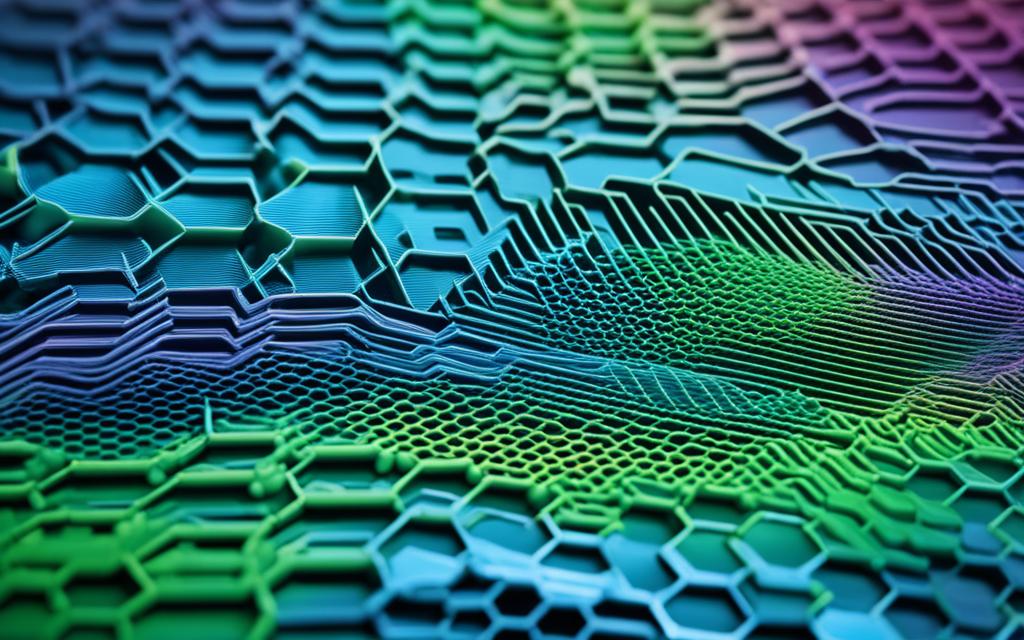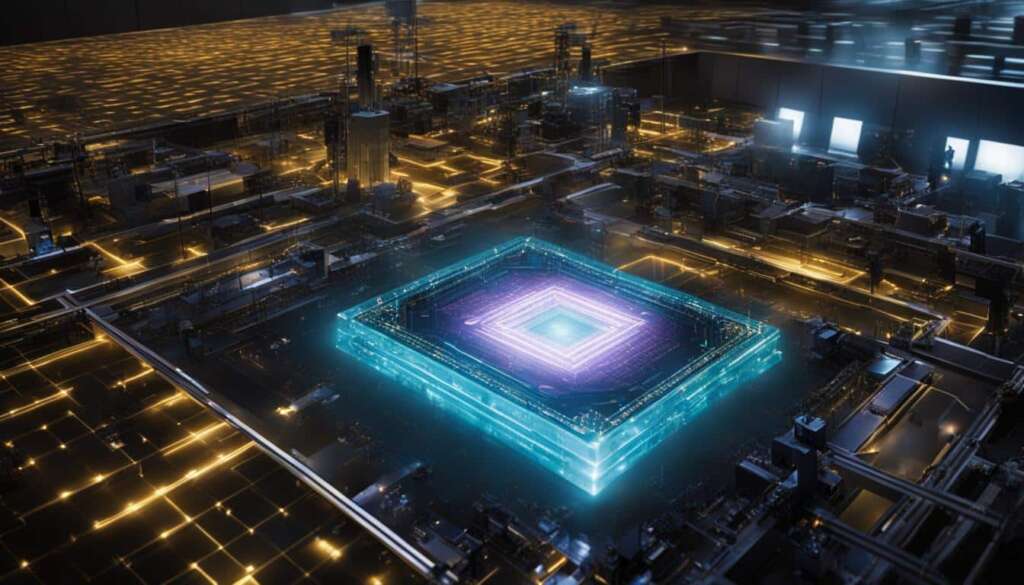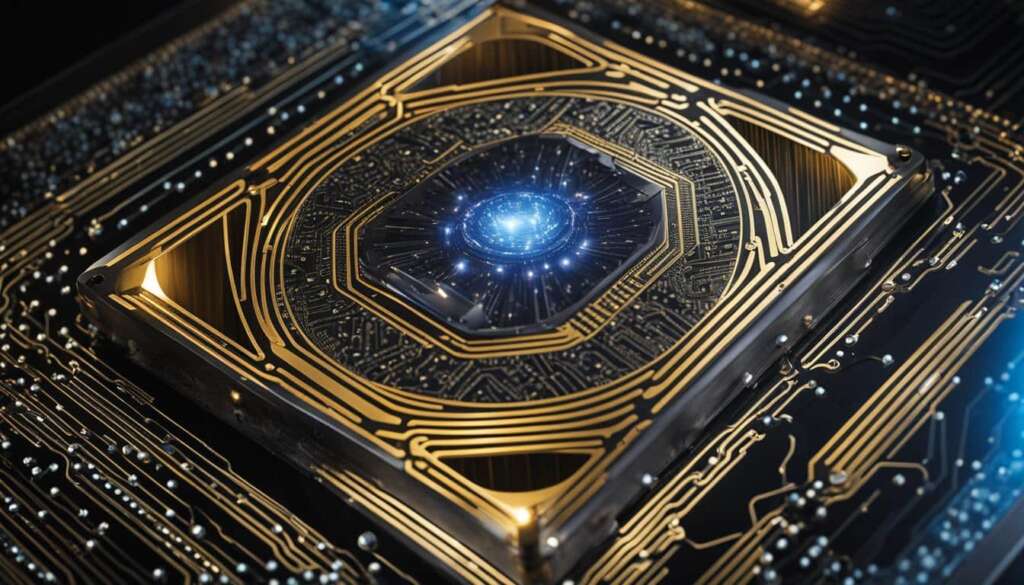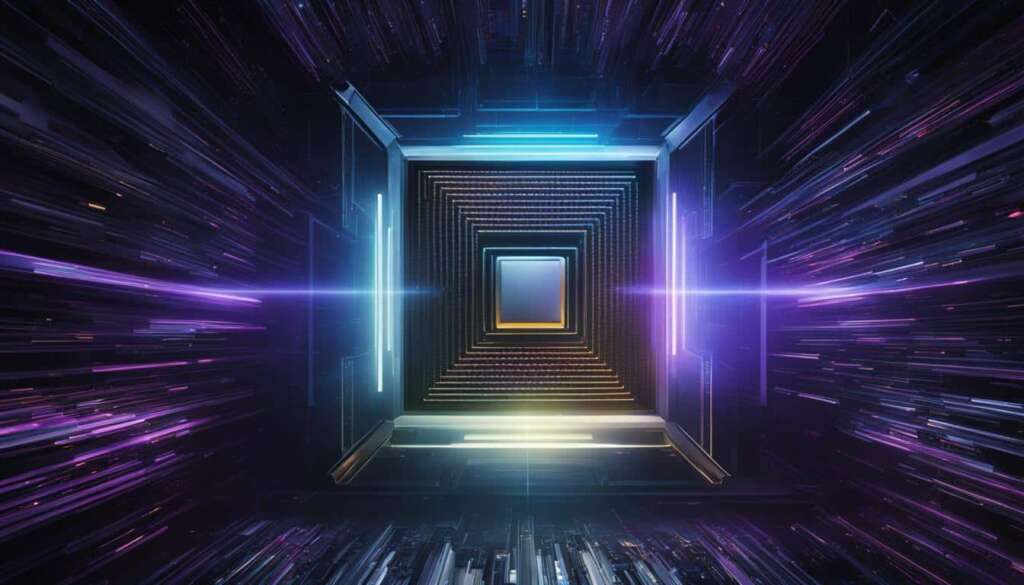Table of Contents
The fractional quantum anomalous Hall effect, a phenomenon in which electrons splinter into fractions of their whole, has been observed in multilayer graphene. This effect, also known as the fractional charge, is rare and has the potential to be used in the development of resilient quantum computers. Previously, the effect had only been observed under high magnetic fields, but researchers at MIT have now observed it in a simpler material, specifically five layers of graphene.
The researchers found that by stacking the graphene sheets in a specific configuration, the electrons within the structure exhibited the fractional quantum anomalous Hall effect without the need for an external magnetic field.
This discovery is significant as it shows that graphene, a material with exceptional properties, can exhibit unconventional electronic behavior and open up possibilities for more robust quantum computing applications. With its unique structure and exotic electronic state, multilayer graphene holds promise for advancements in various fields, bringing us closer to exploring the full potential of quantum phenomena.
Understanding the Fractional Quantum Hall Effect
The fractional quantum Hall effect is a peculiar phenomenon that occurs when particles transition from individual behavior to collective action. This correlated behavior emerges in specific states of matter, such as when electrons slow down sufficiently to interact and perceive each other. Through these interactions, rare and exotic electronic states can emerge, including the fractional charge where electrons split into fractions of their total charge.
The initial discovery of the fractional quantum Hall effect took place in heterostructures of gallium arsenide under high magnetic fields. This unexpected breakthrough had no theoretical predictions at the time, making it even more remarkable. In recent years, scientists have observed versions of the fractional quantum Hall effect that no longer require a magnetic field, thus opening up new possibilities for research and potential applications, such as topological quantum computing.
This correlated behavior, where electrons exhibit fractional charges and lead to the emergence of exotic electronic states, has captivated researchers and advanced our understanding of quantum physics. The fractional quantum Hall effect represents a realm of physics where particles defy conventional wisdom and exhibit peculiar behavior that can potentially pave the way for revolutionary technologies.
Fractional Quantum Anomalous Hall Effect in Graphene
Graphene, a two-dimensional material composed of a single layer of carbon atoms, has demonstrated exceptional electronic properties. Researchers at MIT have been exploring the behavior of multilayer graphene, specifically pentalayer graphene, which consists of five layers stacked slightly off from each other. By aligning pentalayer graphene with hexagonal boron nitride (hBN), a material with a similar atomic structure, a moiré superlattice is formed. This lattice structure slows down the electrons in the graphene layers, simulating the effects of a magnetic field.
Through their investigations, the researchers have observed signs of the fractional quantum anomalous Hall effect in the graphene-hBN structure. This discovery provides compelling evidence that graphene, a material not initially anticipated to exhibit such behavior, can manifest this exotic electronic state. The fractional quantum anomalous Hall effect is a rare phenomenon where electrons splinter into fractions of their whole, resulting in an unusual and intriguing electronic behavior.
Graphene’s ability to exhibit the fractional quantum anomalous Hall effect opens up new possibilities for exploring and harnessing exotic electronic states. This finding has significant implications for the potential applications of such states in the field of quantum computing and other relevant areas.
Understanding and utilizing the unique properties of multilayer graphene and its ability to exhibit the fractional quantum anomalous Hall effect could lead to advancements in various fields, including quantum computing. The exploration of rare electronic states in graphene contributes to the broader understanding of fundamental physics and may pave the way for future technological breakthroughs.
Below is a visually engaging representation of the structure of multilayer graphene and its alignment with hexagonal boron nitride:
Conclusion
The fraction quantum anomalous Hall effect observed in multilayer graphene signifies a groundbreaking development in quantum physics. By demonstrating this effect in a simpler material like graphene, without the reliance on high magnetic fields, new avenues for research and potential applications have emerged. The discovery of exotic electronic behavior in graphene provides compelling evidence of its suitability for more resilient forms of quantum computing. Further exploration of multilayer graphene and other elusive electronic states promises to deepen our understanding of fundamental physics and may pave the way for exciting technological advancements in the future.
FAQ
What is the fractional quantum anomalous Hall effect?
The fractional quantum anomalous Hall effect is a phenomenon in which electrons split into fractions of their whole charge, resulting in rare electronic states.
How has the fractional quantum anomalous Hall effect been observed in multilayer graphene?
Researchers at MIT have observed the fractional quantum anomalous Hall effect in multilayer graphene by stacking five layers of graphene in a specific configuration. This effect was observed without the need for an external magnetic field.
What are the potential applications of the fractional quantum anomalous Hall effect in graphene?
The discovery of the fractional quantum anomalous Hall effect in graphene opens up possibilities for more robust quantum computing applications. This exotic electronic behavior could also have implications in other fields, such as topological quantum computing.
How does graphene exhibit the fractional quantum anomalous Hall effect?
Graphene, a two-dimensional material composed of carbon atoms, has exceptional electronic properties. By creating a moiré superlattice with hexagonal boron nitride, researchers were able to mimic the effects of a magnetic field and observe signs of the fractional quantum anomalous Hall effect in graphene.
What does the observation of the fractional quantum anomalous Hall effect in graphene signify?
The observation of the fractional quantum anomalous Hall effect in graphene demonstrates that this rare electronic state can occur in a material that was not initially expected to exhibit such behavior. This discovery highlights the potential of graphene for exploring unconventional electronic states and advancing quantum computing technologies.













